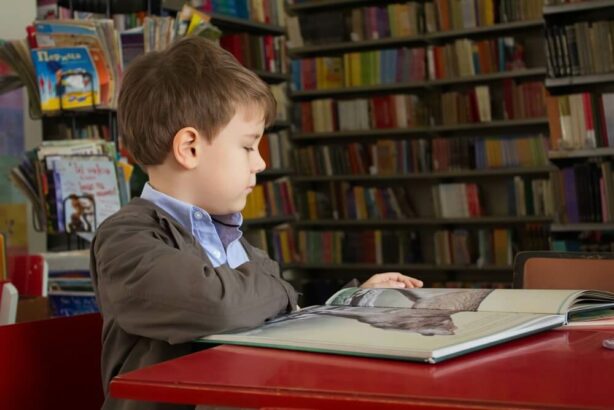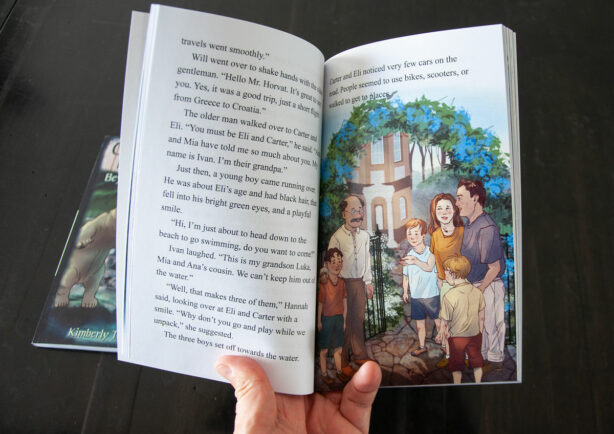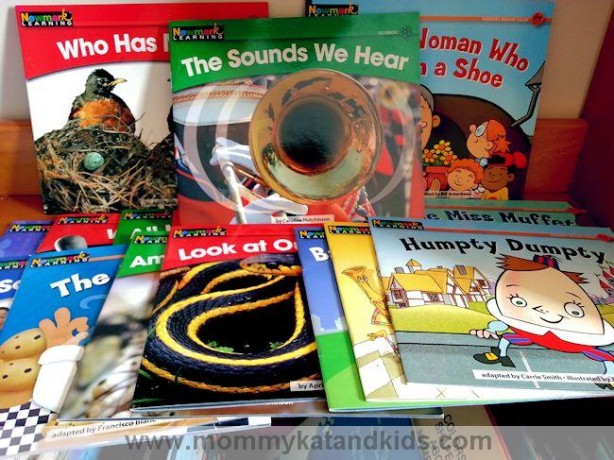Reading is a complex, meaning-making process. There are so many things occurring as we read: recognizing letters, sounds, and words, acknowledging spacing, identifying how punctuation changes a sentence, comprehending story lines, making and confirming predictions, and so much more.

Given the complexity of this process, teaching children to read can seem like an overwhelming task. Fortunately, we can break reading down into smaller, manageable parts, beginning with foundational skills.
As children progress, their reading skills continue developing, moving from simple and engaging bedtime stories on Naratopia.com to more complex books and novels, and the emphasis shifts from learning to read, to reading to learn.
If your own child is beginning this journey, use these 4 steps for teaching kids to read.
Concepts About Print
Concepts about print is a phrase that refers to book handling skills or “how books work.”
For example, it is understood that we read left to right, which way to turn the pages, the difference between a letter and a word, and that print carries meaning.
These pre-reading skills begin when children are exposed to books, including when they are read to and when they have opportunities to explore books on their own.
Having experiences with books in some way is the first step to teaching children how to read, and reading aloud to children is a great way to get started with that.

Letters and Sounds
Another precursor as we teach kids to read is identifying letters of the alphabet and their corresponding sounds.
Children learn letters through many means, including exposure to poems, books, and rhymes, singing songs, playing alphabet games, and using materials like magnetic letters.
It’s not necessary for children to be able to identify every letter and sound before they begin to read. However, learning letters and sounds will allow children to move on to higher level texts.
Sight Words
Sight words are also known as “high-frequency words.” They are the words found most frequently in texts.
For early readers, these are words like “a,” “the,” “is,” and “I.” As they become more proficient readers, children learn sight words such as “they,” “would,” “about,” and “because.”
Developing a bank of sight words that a child can recognize quickly significantly supports learning to read. When children can rapidly identify sight words, their effort can be put toward solving other, more difficult words that require more strategies.
As well, once children have a bank of known sight words, they can read early texts with more independence. This is a great boost to their confidence as they learn to read.

Word-Solving Strategies
Another important step when we teach kids to read is using strategies to solve unknown words. This goes beyond the common advice to “sound it out.” Children need to use meaning, structure, and visual cues as they read.
When children use meaning cues, they ask themselves, “Does that make sense?” as they read. If they make a mistake while they’re reading and the sentence doesn’t make sense, we want children to stop and try again.
Reading for meaning also helps children predict what words will be. As an example, consider the sentence starter, “My dog likes to go for a…” Children are able to use meaning, along with their knowledge of the sound ‘w’ makes (a visual cue), to determine that the word is “walk.” Sounding out a word like “walk” just doesn’t work!
Children also use structure cues while reading, asking themselves, “Does that sound right?” These cues ask readers to rely on their knowledge of the English language and how we say things.
For example, if children are paying attention to structure, they will recognize they made a mistake if they read, “He have a cat” instead of “He has a cat.”
Lastly, it’s important for children to learn how to use visual cues to support their reading. They should ask, “Does that look right?” as they read.
Readers use visual cues when they do things like consider the first letter in a word and the sound it makes or find smaller, known words inside larger words.

Of course, once a kid knows the basics of reading, ensuring proper comprehension is a must. After all, reading isn’t just a matter of decoding words. Understanding the text is every bit as important!
But first, get started with these 4 steps and see how quickly your child progresses. With support and encouragement, we can help children develop a lifelong love of reading!

Thank you for the tips! I also believed that our kids learn best when we teach them the sounds of the letter and incorporating songs, stories, dances, and activities. I also sometimes search some activities on jolly phonics to supplement my child’s learning on reading.